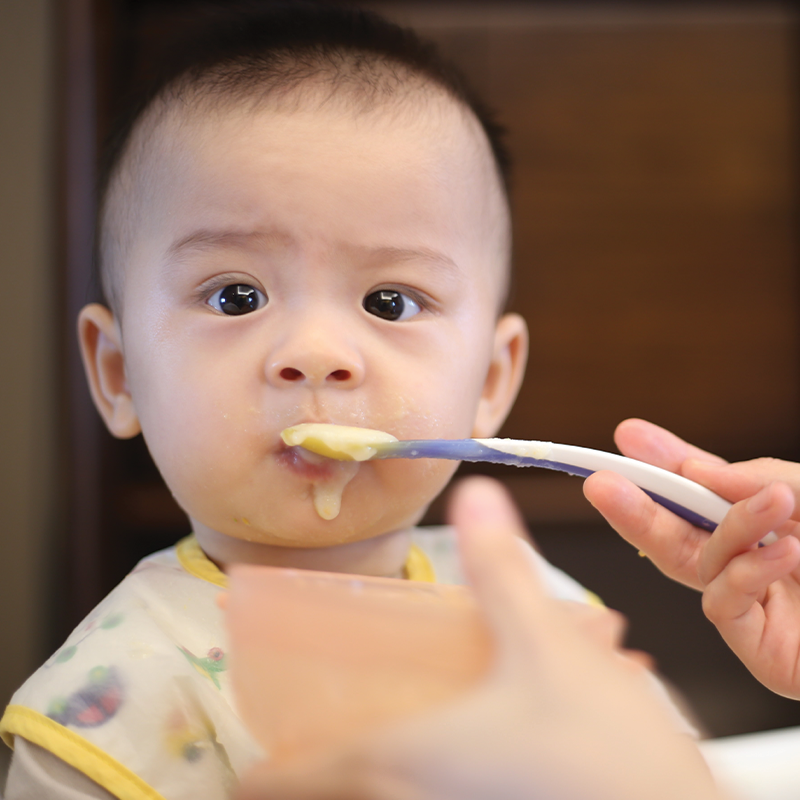
20 May Introducing Solid Foods to Your Baby
Your baby’s transition from formula or breast milk to solid food can be an exciting time in any parent’s life. They can finally start joining you for meals at the kitchen table, and you can begin promoting those healthy eating habits at an early age. We’ll admit that it can be challenging when you start incorporating solid foods into your baby’s diet, but you don’t have to struggle through this alone. Here are some answers to our most commonly asked questions on this topic.
When can I start easing them into solid food?
When your child is first starting out eating solid foods, you may want to be mindful of what they have been previously consuming. We like to introduce baby food at six months for infants who are breastfeeding and often as early as four months for those who are formula feeding. A good rule of thumb is waiting until your baby is about double their birth weight and 13+ pounds.
Other things you may want to consider is at what developmental stage they are at. If your child cannot yet sit up in a highchair or doesn’t have an infant seat with proper head control to keep the head steady, you may not want to start on solid foods. Along with this, the thickness of the food may be challenging to adjust to at first. A child that is used to drinking breast milk or formula will have a more difficult time swallowing thicker foods like mashed avocadoes or grain cereal, so don’t be alarmed if you see food all over the place when first starting out.
Ultimately, though, each child is unique and will react differently to adding purees to the diet of breastmilk or formula, so consult your pediatrician for any changes in diet.
What should be on the menu?
A common misconception among newer moms is that you have to start with specific foods like grain cereals or vegetables to ensure that your baby starts on the right track. And while this may be the case for some, not every food routine is one size fits all, and other infants may prefer sweets like fruit or something with more substance like meat-based products.
You may also be wondering when the right time is to let your baby feed themselves as opposed to being spoon-fed. If your baby is already bringing objects to their mouth, it may be time to start incorporating finger foods like small pieces of banana, scrambled eggs, or even well-cooked pasta or crackers. We suggest avoiding most processed foods until they get a little older, though.
And don’t forget! As much as adults try to eat by the food pyramid and make sure they have a healthy balance of proteins, grains, fruits, and vegetables, babies also need this. So, combining these with their regular milk routine is highly recommended.
Anything else?
- Start slow. A teaspoonful or half a tablespoon may be more than your baby can handle at a time, so don’t be concerned if they aren’t getting large amounts of new food groups down.
- Don’t be alarmed if your baby rejects the food immediately. This is new for them! Just like adults may feel a little weird about adventurous eating, the world of mashed peas and fruit purees can be daunting for little ones.
- Your baby may get agitated, and that’s OKAY. Don’t be ashamed to go back to breast or bottle-feeding if your first couple of tries winds up in tears.
Starting your baby on solid foods is a great way to begin introducing them to different tastes and textures. Remember, even when your baby is starting to sample newer foods, you want to make sure that they are still getting most of their nutrition from breast milk or formula. If you have additional questions about the safe practices for introducing your baby to solid foods or different food options to try, you can call us directly for an appointment at 817-617-8600 or message your pediatrician on the Healow app.

